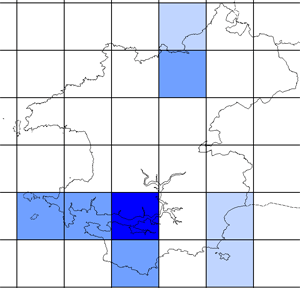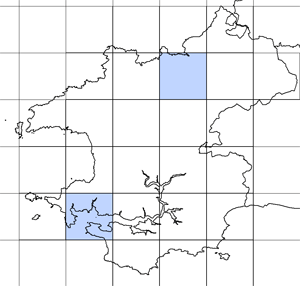Goldeneye - 1980s winter atlas
 Sunday, September 18, 2011 at 4:03PM
Sunday, September 18, 2011 at 4:03PM 
The BTO winter atlas showed that Goldeneyes were present in both estuarine and fresh water 10km squares during the winters of 1981-82, 1982-82 and 1983-84.
The darker the colour, the higher the relative total count for each 10km square, the darkest blue represents over 27 birds, with up to 47 recorded in SM 91.
Graham Rees
 1980s BTO winter atlas,
1980s BTO winter atlas,  GHR,
GHR,  duck,
duck,  wildfowl in
wildfowl in  Goldeneye
Goldeneye 






